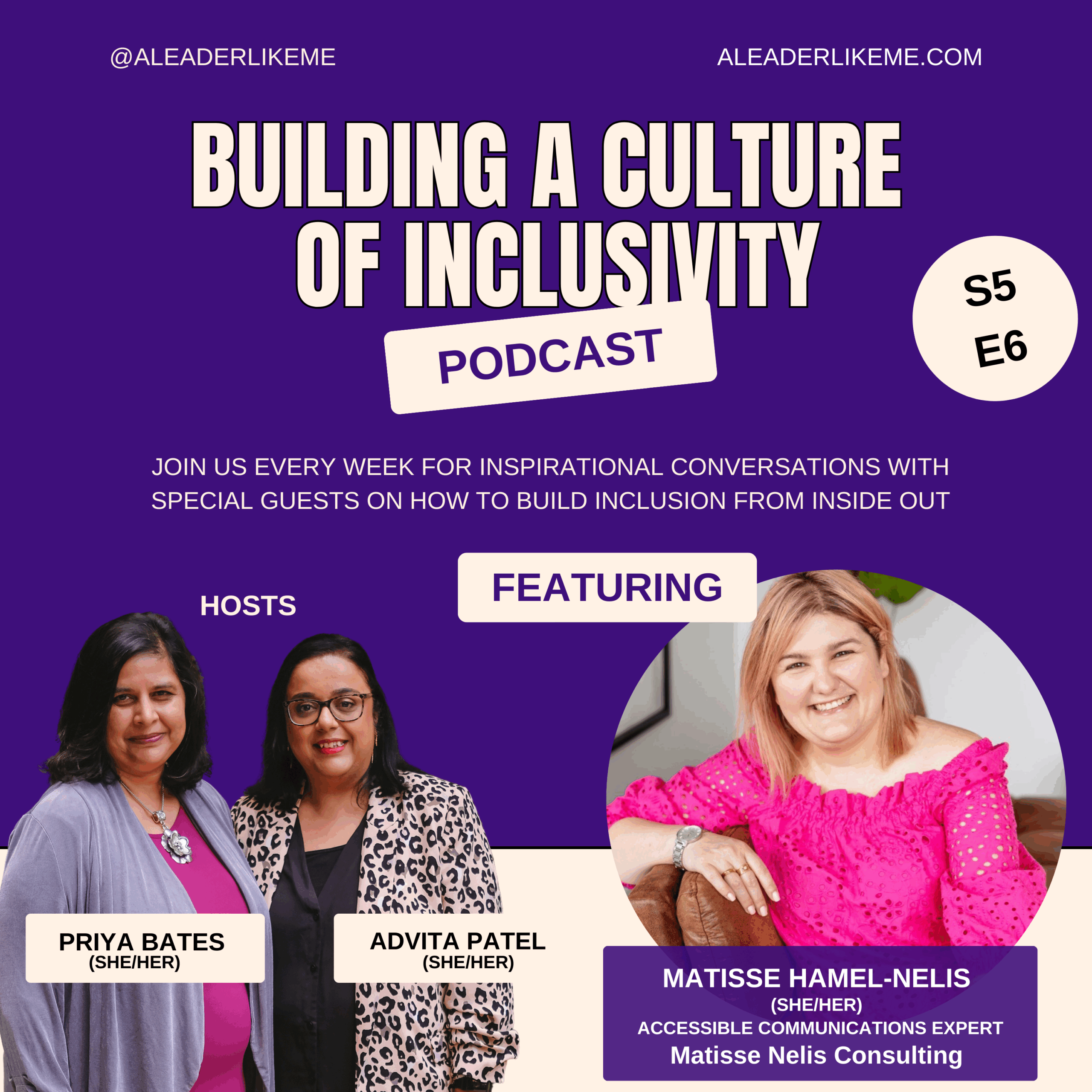In the latest episode of A Leader Like Me, co-hosts Advita Patel and Priya Bates sat down with Christelle Beneteau, Chief People Officer at Ferring Pharmaceuticals. They dug deep into how global companies like Ferring can create a truly inclusive culture across different countries and cultures.
As Christelle shared her experiences and passion for this work, some great lessons emerged for communication professionals and EDI (Equity, Diversity, Inclusion) leaders. Here’s a summary of the conversation with some key takeaways.
Balancing Global Values with Local Needs
One of the most insightful parts of the chat was how Ferring navigates the challenge of running a global business while respecting local cultures. With operations in more than 55 countries, Christelle explained that while Ferring has an overall strategy for diversity and inclusion, it’s crucial to allow local teams to develop their own approaches that make sense for their unique contexts. The Beyond Barriers initiative is a perfect example. It’s a framework that gives regions the flexibility to tackle diversity gaps in ways that are most relevant to them.
Takeaway: To build a truly inclusive culture, it’s important to give local teams the power to adapt global strategies to fit their community’s needs.
Supporting Families with the Building Families at Ferring (BFF) Policy
Christelle’s excitement about Ferring’s family support policy was contagious. The Building Families at Ferring (BFF) policy is a forward-thinking initiative that supports employees with fertility treatments, adoption, surrogacy, and parental leave—26 weeks, for both mothers and fathers, no less. It’s clear that inclusivity at Ferring goes beyond gender—it’s about making sure everyone, regardless of their family structure, gets the support they need.
Takeaway: Inclusive policies aren’t just about ticking boxes; they’re about truly caring for your employees’ lives in and out of work.
Focusing on Strengths, Not Weaknesses
Another powerful part of the discussion was about Ferring’s use of the Gallup Strengths methodology. Instead of focusing on what employees need to “fix,” this approach encourages them to lean into their strengths. Christelle believes that by recognising what makes people unique, you can foster a more inclusive, collaborative environment. When employees understand and appreciate each other’s strengths, it breaks down barriers and creates stronger teams.
Takeaway: Shift your focus to what people do well, and you’ll foster a culture that values everyone’s unique contributions.
Micro-Actions for Long-Term Change
Christelle shared her vision for the future of workplace inclusivity, and it wasn’t about flashy, one-off initiatives. She believes that real change comes from integrating inclusion into the everyday—through what she calls micro-actions. These are small, consistent efforts everyone can take to make inclusion part of the workplace culture.
Takeaway: Big campaigns might catch attention, but lasting change happens through everyday actions taken by everyone.
Final Advice for EDI Leaders: Start Small, but Start Now
Christelle’s advice to leaders looking to champion inclusivity in their organisations? Start small. Don’t wait for the perfect moment or the perfect plan. Take small steps every day, whether that’s educating yourself, challenging unconscious biases, or simply making space for diverse voices.
Takeaway: Inclusion is everyone’s job, and even small actions can lead to big change over time.
You can listen to Christelle’s interview on your favourite podcasting platform or by visiting our podcast page.
Blog curated by Advita Patel using AI technology



